
4 Magic Words To Get UnStuck – – – Have you ever gotten stuck? And hoped like hell to get unstuck? Danny G. dreamed of starting his own bakery, but

4 Magic Words To Get UnStuck – – – Have you ever gotten stuck? And hoped like hell to get unstuck? Danny G. dreamed of starting his own bakery, but
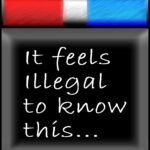
25 AI Writing Assistants You Should Try ~ ~ ~ Artificial intelligence – AI writing assistants are revolutionizing the way writers write. Unless you’ve been living under a rock, you’ve
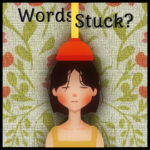
Writer’s Constipation vvv What Pro Writer’s Do When The Words Won’t Flow Writer’s constipation is different from writer’s block. Writer’s block finds you staring at the blank page or screen,
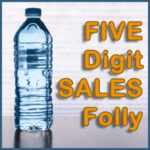
The Power of Place in Persuasive Marketing ~ ~ ~ Persuasion… One critical marketing mistake made often, is thinking the value of a product is intrinsic – that something, even

One Simple App For Writing Better Copywriters… Do you make these common and fatal mistakes when writing copy… Do readers get lost in your words? Struggle to grasp your points?
Persuasion Begins With Knowing This vvv We are all born with it. It makes babies cry. And old men weep. We spend our lives trying to satisfy it. We succeed.
One Quick Tip Makes AI Write Faster and Better Would you like to know a quick and easy way to get your AI to write faster – while at the
Why You Must Write and Test Copy for All Reading Levels Heads up copywriter. Know this… You can craft the most compelling offer. Pile it high with indisputable proof. But
Which easy book profits are you missing out on? Did you know you could have your own book, self-published and available for sale, giveaway, or business promotion… this year! You

12 Compelling Reasons To Write a Book Now Introduction ~ ~ ~ Ever think about, or been told you should write a book? Your own non-fiction book? But you’re not
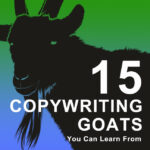
Get Copywriting Examples from These 15 GOATs Eager to become a top-notch copywriter? There are two paths you can take: Stumble, fumble and fight to figure it all out on

10 Copywriting Examples From History Copywriters – Let’s have some fun today! As I write this, it’s January 1, 2024 Happy New Year! Remember though, we don’t need special dates
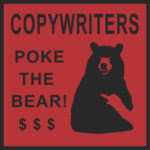
Copywriting Tips : Powerfully Tapping Fears Many struggling copywriters and business newbies rely solely on stating product or service positive benefits when making their pitch. Tastes great. Lasts longer. 20%
Copywriting Courses for Beginners Copywriting is a promising career path for writers in the digital age. Average salaries for copywriters range can from $40,000 to $70,000 annually, and demand is
In marketing, advertising, and sales, one cannot overstate the importance of making an emotional connection with potential customers.
More than any facts or features, what truly motivates people to buy is how we make them feel.
The most effective advertisements and sales presentations create a compelling narrative and immerse viewers in an emotional experience.
They tap into universal human desires like love, freedom, security, independence, freedom, or achievement. A good emotional appeal should feel aspirational yet attainable with the advertised product.
A good advertisement shows the consumer how their life could improve in a meaningful way.
The best appearls offer the promise of TRANSFORMATION!
Connecting with emotions builds trust and rapport with customers. It shows that our brand understands them intimately and cares deeply about their well-being.
Ads that fails to establish this emotional bond will likely be ignored no matter how impressive the product itself may be.
Consider the entertainment industry as a powerful marketing example.
Why do we love music?
Because of the sounds that vibrate our eardrums?
NO!
Because of how it makes us FEEL inside!
It makes us laugh, cry, miss our ex, love our current, long for the next.
Billions of downloads of music because it makes us FEEL something.
How about movies?
It’s the same. Billions in sales and downloads. Not because the movie is cinematically perfect or the characters even real, but because of how that movie makes us FEEL inside.
We cry for loves lost. Or happiness gained against all odds. We rant against injustice exposed. We long for the adventures they show. We feel empowered ourself when the little guy wins out against the giant.
We are feeling creatures.
Isn’t that why we seek love? Even why we buy pets?
We crave, lust, are driven by, my God...
Something that makes us FEEL something!
Else we feel dead. Bored. Depressed. Disgusted. Unmotivated.
But, oh boy, give us a roller coaster ride. A bungie jump. Scare us from behind. Give us a big hug…
And we’re exilerated! We feel alive again!
The greatest sin in advertising, is forgetting to take your prospect on an emotional ride.
Let your prospect viscerally experience the horrid lows of his current condition.
Let him feel just how much it might get worse if he does nothing.
Take him to the bottom. The very bottom.
Then lift him up to the top where he can feel the breeze, feel the freedom.
Let him feel what it’s like to be on top of the world having now solved his most daunting problem with the help of your solution. Show him what’s possible. Share stories of how others just like him found success – quickly and easily, and he can too!
Then, gently take him back down to the crossroads.
Heaven with the purchase of your solution. Just a click away.
Or Hell.
Do nothing. Stay right where you are. Live in that hell of your own creation, knowing full well you had the opportunity for transformation, but did not take it.
If you can make him feel that future regret now, you may have done him the greatest service of all.
As copywriters, marketers, sellers of things, we are not in the business of selling those things directly, but of offering TRANSFORMATION – a better life.
Make them FEEL that better life is within their grasp right now.
Here are some relevant quotes on the power of emotional appeals in marketing and advertising:
1. “We don’t buy goods and services. We buy relations, stories and magic.” – Seth Godin
2. “Marketing is no longer about the stuff that you make, but about the stories you tell.” – Seth Godin
3. “People don’t buy what you do, they buy why you do it.” – Simon Sinek
4. “Features tell, benefits sell.” – Dan Lok
5. “Emotions drive people. People act emotionally, and justify logically.” – Zig Ziglar
6. “Never forget that the most powerful element in advertising is the ad itself.” – Leo Burnett
7. “What really decides consumers to buy or not to buy is the content of your advertising, not its form.” – David Ogilvy
8. “Advertising justifies its existence when used in the public interest. It is much too powerful a tool to use solely for commercial purposes.” – Leo Burnett
9. “The best advertising doesn’t just circulate information. It penetrates the public mind with desires and belief.” – Leo Burnett
10. “A brand for a company is like a reputation for a person. You earn reputation by trying to do hard things well.” – Jeff Bezos
11. “Advertising is the art of arresting the human intelligence just long enough to get money from it.” – Chuck Blore
12. “The way to gain a good reputation is to endeavor to be what you desire to appear.” – Socrates
13. “There are no facts, only interpretations.” – Friedrich Nietzsche
14. “We don’t see things as they are, we see them as we are.” – Anaïs Nin
15. “Emotion is the driving force behind most, if not all, of our behaviors.” – Jenefer Palmer
16. “Your brand is what people say about you when you’re not in the room.” – Jeff Bezos
17. “The feeling of being valuable is essential for passion and motivation.” – Anonymous
18. “We don’t see things as they are, we see them as we feel.” – Anaïs Nin
19. “Passion is energy. Feel the power that comes from focusing on what excites you.” – Oprah Winfrey
20. “Marketing is about values. It’s a complicated world, increasingly difficult to navigate. People are hungry for guides to make choices.” – Seth Godin
21. “Behind every buying decision, there is emotion.” – Ayesha Khanna
22. “I’ve learned that people will forget what you said, people will forget what you did, but people will never forget how you made them feel.” – Maya Angelou
23. “The strongest emotional appeal in advertising focuses on the deepest wants and needs of the consumer.” – Claude Hopkins
24. “The best way to persuade people is with your ears, by listening to them.” – Dean Rusk
25. “The aim of marketing is to make selling superfluous. The aim is to know and understand the customer so well that the product fits him and sells itself.” – Peter Drucker
One of the best tools around for understanding the customer, his needs, his true desires, and the emotional hot buttons you should press which cause him to buy is The Copywriter’s Persuasion Toolkit.
It includes easy to follow graphics, plus fill-in-the-blank templates which show you pricely which emotions and which appeals get your prospect to buy.
Included are bonus reports every aspiring copywriter needs to get started earning money for paid copywriting gigs in less than 10 days – even with no prior experience!
In today’s crowded marketplace, an emotional appeal is clearly the best way to stand out.
Our feelings are what stick with us and compel us to take action.
As marketers, we must move beyond touting features and benefits. We must understand what truly matters to consumers on a deeper, emotional level.
When we touch their hearts, their wallets open.
Magical!
Care to try?
Craft your first emotional appeal today using The Copywriter’s Persuasion Toolkit.
To your Success!
– Robert Schwarztrauber
P.S. Here’s a copy and paste link to the toolkit copywriters love: https://writeforwealthclub.com/copywriterstoolkit/
Copywriting frameworks provide busy copywriters with ease, structure, and guidance for creating effective advertising messages based on principles which have already proven effective in past promotions. Why reinvent the wheel!
They act as templates to help organize thinking and develop compelling copy. This article will explain some of the most common copywriting frameworks used by the most professional copywriters and marketers of the past and still today.
One of the simplest, but most effective headline templates you can use looks like this:
The AIDA framework guides the reader down a slippery slope of:
We first grab their attention with a striking headline or opening. Then stimulate interest in our product or service, often with a story. Next, we build desire by emphasizing benefits, transformation, and especially by tapping key emotions. Finally, we prompt them to take action – make a purchase, signup, inquire, etc. by putting forth an offer so good, they’d feel stupid to pass it up.
This framework involves:
First connect with the audience by showing you understand their struggles. Then make them anxious to solve those struggles quickly. Lastly, demonstrate how your offering perfectly alleviates their pain or solves their problem.
It might go something like this:
Problem: Do you suffer through each day with crippling back pain?
Agitate: Sadly, this seldom gets better on its own. In fact, ignoring this problem can lead to other health problems, such as knee pain, sciatica, sleeplessness and even deadly slips and falls.
Solve: Recently, a clinic in Sweden has begun marketing a phenomenally effective lower back treatment known as “Spine Twine”.
This is a made up scenerio, of course, to simply give you an example of the framework.
In order to effectively develope your initial callout, or headline to the prospect, one would first do research into the buyer hotbuttons which reveal pain points your prospect is most likely to react to.
The best way to gain attention is to have the reader believe you are talking straight to them. You know them so well. You describe their pain or problem exactly.
The Copywriter’s Persuasion Toolkit, with it’s simple templates, and clear visual guides lets you quickly and easily discover your prospect’s most unique and powerful emotional triggers.
The before-after framework paints a negative “before” picture showing the situation without your product. This is contrasted with a positive “after” picture demonstrating the transformation after using your product.
Dramatically highlight how your customer can go from their current frustrating state to an ideal future state with your help.
Weight loss ads commonly use this framework. Bodybuilding ads as well. The home improvement industry also does this effectively. Any time you can have a marked physical transformation, it’s good to both show the before and after photos along with a heart-warming story of how your product or service contributed to their success.
Photos aren’t always mandatory.
One of the most famous, most successful before and after promotions of all time was done by Martin Conroy in his “Two Young Men” letter for the Wall Street Journal. That story sold over $2 billion in subscriptions over a span of about 25 years. It told the story of two young men who started out the same (before), but one found wild success later on in life (after). What was the difference? The successful one subscribed to the Wall Street Journal!
No before and after photos were needed for this. The story said it all.
FEAR stands for:
List the main features and uniqueness of your product. Highlight the emotional benefits customers will feel. Explain logical advantages over alternatives. Vividly portray the tangible results achieved.
This framework progresses the audience from product facts, to feelings, to rational arguments, to envisioning real-world outcomes.
As we’ve seen in our previous post, FEAR is one of the most powerful human motivators.
TRANSFORMATION is another powerful motivator. Most folks want something different. Walk them through how your product or service can provide that. Show the transformation that’s possible in a way that lets them think,
“Hey, I think if I only had that, I could do this!”
Some standard copywriting formulas include:
Copywriting frameworks provide tried-and-true structures to organize persuasive messages and promotions. Mastering these foundational formulas and templates allows copywriters to efficiently compose compelling advertisements.
Many veteran copywriters, the late, great Gary Halbert most notably, insisted that newbies hand-copy past successful promotions to get a “feel” for how effective copy is written.
To internalize the flow, the formulas, and the feelings good copy evokes.
Hopefully this brief overview of popular copywriting frameworks gives a sense of how to effectively craft marketing copy and advertising content.
However, at the foundation of every useful framework is an intimate understanding of the emotional triggers which must be tapped in order to get YOUR prospect to act.
Kid’s won’t bite no matter how many benefits you list for brussels sprouts. And vegans will never be swayed by the transformational benefits of beef.
In order for any promotion to be successful, you have to know what moves YOUR people. What their deepest desire is for.
That teen boy you’re trying to entice with clearer skin, isn’t interested at all in the chemistry of your pimple cream. He wants to know how fast it will get rid of that friggin’ zit because he has a date with the love of his life on Friday.
How do you discover the most potent and hidden desires of ANY prospect?
The Copywriter’s Persuasion Toolkit, with its simple templates, and easy visual guides is the fastest and simplest method I’ve found. Others seem to like it too.
Comes with a hassle-free guarantee. So there’s no risk at all to try it.
Which copywriting framework will you try first?
– Robert Schwarztrauber
P.S. Internet sensation Andrew Tate offered this powerful nugget of wisdom once that stuck with me. When asked, “Andrew, how do I get people to buy?” he said you just have to flip it. Ask yourself, every time you make a purchase, ask yourself, “How did they just get me to buy this?” “How did they get me to buy this $7 cup of coffee at Starbucks?” Was it store ambiance? Was it I want to be seen with a Starbuck’s cup, like I’m cool too? Was it because no coffee tastes better? Was it because they ask for my name, then screw it up and make me laugh? Do this, ask, keep a journal. Soon enough you’ll have a big list of not just why you buy, but why all those other folks do as well. Then, do what they did.